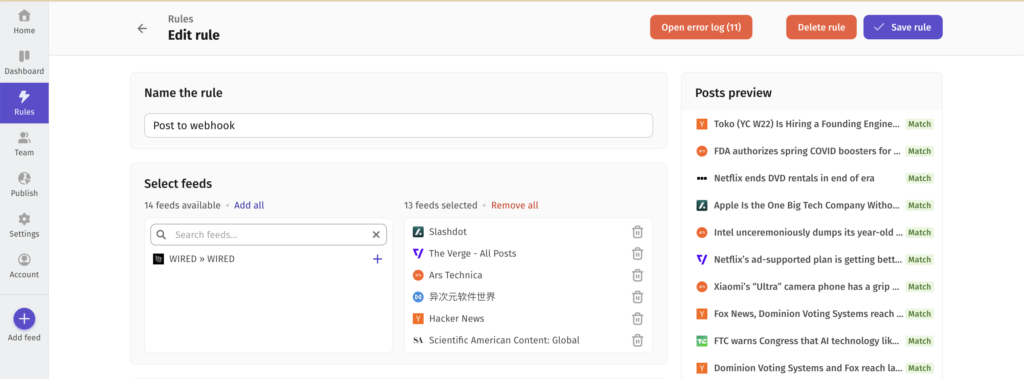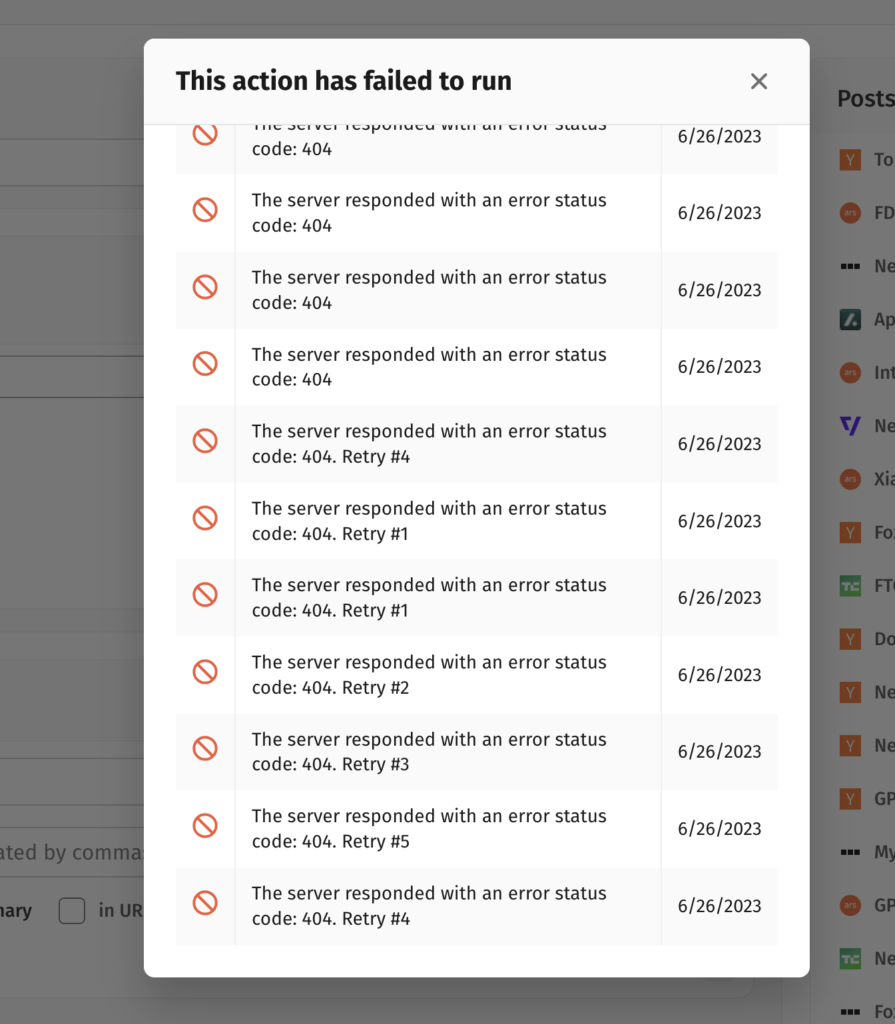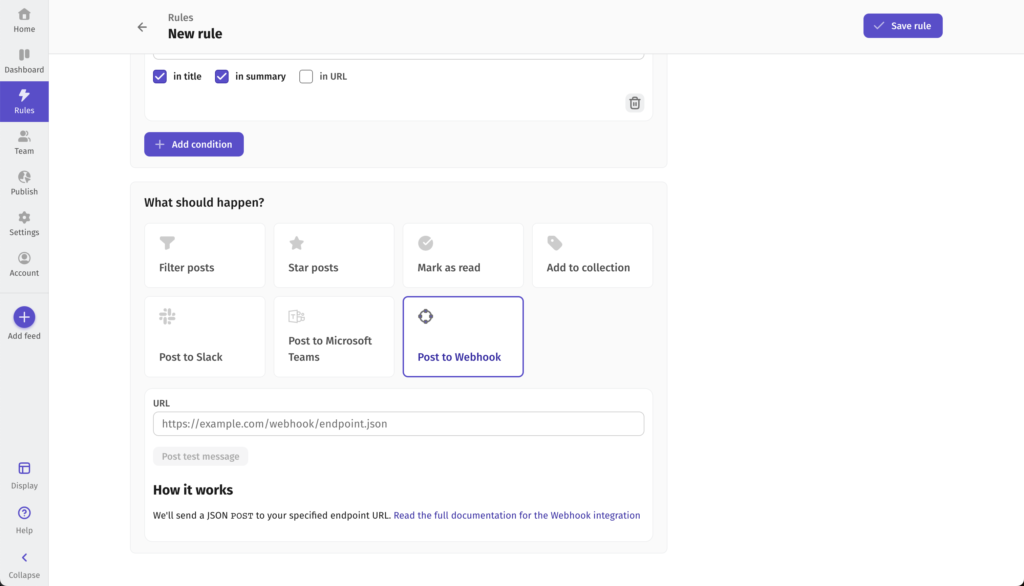The “Post to Webhook” rule enables you to automate the process of sending new RSS feed posts to your specified webhook endpoint, as soon as they become available. You can also fine-tune what posts are being sent by setting up keywords to filter on. When a new post matches your criteria, it will be sent to your webhook endpoint as a JSON formatted POST request.
JSON payload format
Each POST request sent to your webhook will contain two main elements: the post and the feed.
It also contains metadata elements to identify the webhook message. The version field states which version of the Feeder webhook API is being sent. The version is constant to 2023-06-26 and will be updated if breaking changes are made.
{
"version": "2023-06-26",
"message_id": "a unique UUID for this message, will be constant during retries",
"feed": { ... },
"post": { ... }
}The post element contains information about the individual post:
{
"id": "The unique identifier of the post",
"title": "The title of the post",
"url": "The URL where the post can be accessed",
"published": "The date and time when the post was published",
"content": "The content of the post",
"audio_url": "link to mp3 attached to post (if present)",
"image_url": "link to image attached to post (if present)
}Note: published will be null if the RSS feed did not specify a valid published date.
The feed element provides information about the feed from which the post originates:
{
"id": "The unique identifier of the feed",
"source_url": "The URL of the source, for example RSS/Atom feed URL",
"public_url": "The source's self identified public URL",
"title": "The title of the feed",
"favicon": "The URL of the feed's favicon"
}We might make additions to these objects in the future. If you are missing anything, please let us know.
Retry logic
We have built-in robustness with a retry mechanism. If a POST request does not receive a HTTP response code between 200 and 399, we will attempt to resend it based on a specific schedule, defined in seconds:
- Retry 1: After 5 seconds
- Retry 2: After 30 seconds
- Retry 3: After 60 seconds
- Retry 4: 5 minutes
- Retry 5: 10 minutes
- Retry 6: 30 minutes
- Retry 7: 30 minutes
- Retry 8: 30 minutes
Please note that this retry mechanism is only triggered upon real post events and it does not apply to test notifications. The timings are also subject to change.
Debugging
If errors occur you can find them in the action run log. Simply visit the rule that is not working and press “Open error log”

There you will see more details about the webhooks that failed.

Setting up your webhook

To set up your webhook:
- Navigate to the Rules page.
- Create a new Rule
- Add your name, feeds and criteria
- In the “What should happen?” section, choose “Post to Webhook”
- Enter your webhook URL in the text field provided.
- To ensure that everything is set up correctly, you can use the “Post test message” button to trigger a test notification to your endpoint. Please note that this is just a test, and it will not initiate the retry logic if it fails. Also, for the test post to be sent, you need at least 1 feed with posts added to your account.
If you have further queries, please feel free to reach out to our support team.